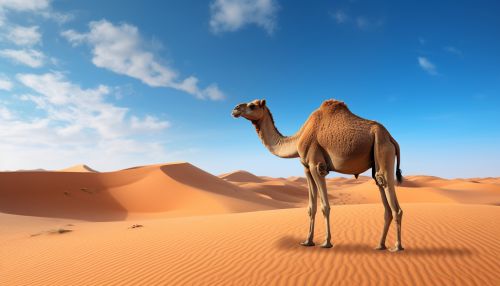The Biological Mechanisms of Animal Adaptation to Desert Environments
Introduction
Desert environments present a unique set of challenges for animal life, including extreme temperatures, scarce water resources, and limited food availability. Despite these harsh conditions, a wide range of animals have evolved to thrive in desert ecosystems. This article explores the biological mechanisms that enable these animals to adapt and survive in desert environments.
Thermoregulation
One of the primary challenges of desert life is dealing with extreme temperatures. Desert animals have evolved various mechanisms for thermoregulation, the process of maintaining an optimal body temperature despite environmental conditions.


Heat Avoidance
Many desert animals avoid the heat of the day by being nocturnal, active during the cooler night hours and resting during the day. Some animals, like the fennec fox, have large ears that act as radiators, dissipating heat and helping to cool the body.
Heat Tolerance
Other animals have developed physiological adaptations to tolerate high temperatures. The camel, for instance, can withstand body temperatures up to 41°C (106°F) before sweating, allowing it to conserve water.
Water Conservation
Water is a scarce resource in desert environments, and desert animals have developed a variety of strategies to conserve water.


Water Storage
Some desert animals, like the camel, can store water in their bodies for later use. The camel's hump is filled with fat, which can be metabolically converted into water and energy when resources are scarce.
Water Acquisition
Desert animals also have unique ways of acquiring water. The desert beetle, for instance, can harvest water from the morning fog by condensing it on its body and then drinking it.
Food Acquisition
Desert animals have adapted to the limited availability of food in their environment.


Carnivory and Scavenging
Many desert animals, like the desert monitor, are carnivores or scavengers, feeding on other animals or carrion. This allows them to obtain both food and water from their prey.
Herbivory
Desert herbivores, like the desert tortoise, have adapted to eat plants that are high in water content, allowing them to obtain both food and water from their diet.
Conclusion
Desert animals have developed a variety of biological mechanisms to adapt to the harsh conditions of their environment. These adaptations allow them to regulate their body temperature, conserve water, and acquire food in a landscape where these resources are scarce.
